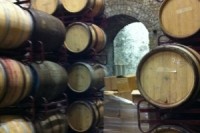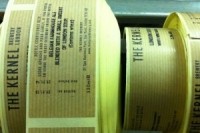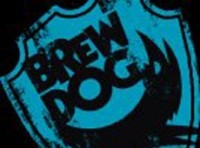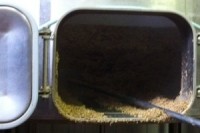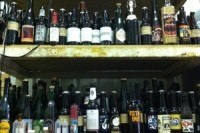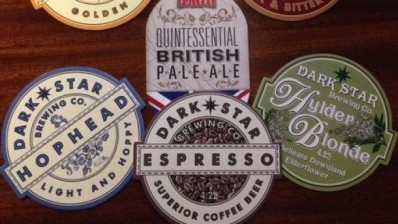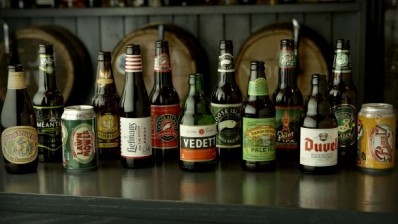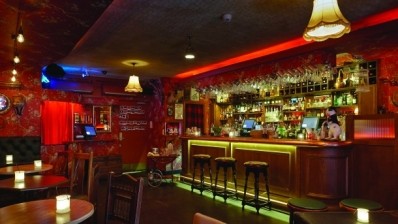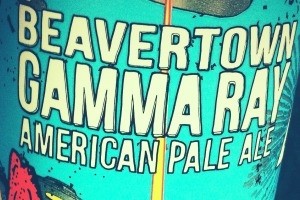Demystifying the craft beer movement

Defining a term is never an easy thing though, especially when everyone has different ideas of what it means. The word craft simply makes us think of something authentic that has been made with a high level of skill. It’s not surprising then that it’s something with which brewers and pubs want their wares to be associated. But why has the desire for it taken hold in the UK now more than ever before?
To read the FULL FEATURE and find out '2014’s craft beer styles to watch' click herefor a FREE TRIAL of M&C Report
EYEING AMERICAN TRENDS
To understand ‘why now’, we need to look Stateside where the craft brewing movement began because, despite the UK being home to historic brewing traditions, in all truth our experimental brewing scene has been greatly influenced by a more devil-may-care attitude from across the pond.
“The [brewing] tradition we have here [in the UK] is great, but it’s quite limiting,” says Evin O’Riordan, founder and head brewer at The Kernel Brewery.
“It’s great that it’s been preserved – CAMRA has done a wonderful job to make sure that cask ale is relevant still at this point in time – but that tradition does hold us back from a willingness to embrace new things. It limits innovation because we have such a strong tradition of beer. The Americans didn’t have a tradition,” O’Riordan reminds, explaining that, without this heritage, they took to brewing with a more creative perspective and interest in obtaining variances of flavour.
“Following the 1979 deregulation of brewing in the USA, enthusiasts, disillusioned with monolithic beer companies, were given the opportunity to start brewing. This led to the revisiting of old beers and styles, with the focus from the brewers being to provide a high quality, interesting product,” says Rob Plant, senior account manager at CGA Strategy.
In America, the craft beer category is defined based on a brewery’s independence from the mainstream as well as the scale and brewing capacity of the brewery itself.
According to the Brewers Association, craft beer must come from a brewery that brews no more than six million barrels of beer per year, have under a quarter of the brewery owned or controlled by the alcoholic beverage industry and has at least half of its volume in all malt beers.
Over here, the terms are a little less rigid and the confusion of craft brewing in the UK is due to many brewers boasting to offer a ‘hand crafted’ product without the end result necessarily standing up to being anything other than a middle-of-the-road session style beer.
To read the FULL FEATURE and find out '2014’s craft beer styles to watch' click here for a FREE TRIAL of M&C Report
DEFINING CRAFT BEER IN THE UK
In an attempt to measure the impact of craft beer however, in August 2013, CGA audited 5,000 beer brands to create a breakdown of the category. In its analysis it used nine separate criteria [price, distribution quality, distribution breadth, branding, flavour, style, ABV, sub category and brewer] and based its measurement on empirical data and consumer research. From the findings, a total market view of craft beer performance in the UK on-trade showed sales worth £225m with growth of 79% compared to the previous 12 months.
The measurement of the category also highlighted how the trend has taken hold in pubs and bars showing that a quarter now stocked craft beers and how although it only represents 1.9% of total beer volumes its rate of growth is phenomenal with a sales spike of 84% for craft beer sold on draught and a 40% uplift for packaged craft beer.
Over at Port Street Beer House in Manchester, the beer range is eclectic, quirky and varied. Its clientele are of all ages and make it a destination because they have one thing in common: a penchant for great beer.
Manager Rosie Setterfield-Price says there are beers from certain breweries that will be “stocked pretty much constantly”. These include: Kernel, Founders, Augustiner and Cantillon. In addition, Port Street Beer House provides a wide range of guest bottles from all over the world.
“We have a good American range from more elusive breweries currently featuring beers from Jolly Pumpkin, Stillwater, Cigar City and Clown Shoes,” she says also namechecking Øl, Mikkeller, Nomada and Del Borgo as favoured European breweries that are “always popular” alongside guest breweries including “Summer Wine, Magic Rock, Kernel, Against the Grain, Weird Beard, Red Willow, Buxton and Arbor.” Plus, she hints that everything from Mark Tranter’s new brewery Burning Sky [Tranter originally set up DarkStar] is “flying out” because “all the beers are absolutely delicious.”
A BEER REVOLUTION
In days gone by, to know more about something made you a nerd and a dullard. The film buff, the wine bore, the petrol head. But something changed over the past few years. Being informed became cool. With this, postmodern trends have revolted against the mainstream. Mavericks are beginning to call some of the shots. Film has its Tarantino. Beer has its BrewDog.
In every great insurgence there are people whose passion for what they believe in, even if it rallies against habitually-accepted standards, singles them out as pioneers and trailblazers.
For the co-founder of Scotland’s largest independent brewery Brewdog James Watt, creating and selling interesting, decent and inspiring beer has always been communicated as a kind of revolution.
For instance, Watt who now has 13 bars, recently described his venues as "motherf***ing cathedrals for craft beer" and has always chosen a more punchy style to marketing to the traditionally straitlaced beer industry.
QUALITY IN CANS
Something else for which Brewdog has been flying the flag is the use of cans for its beer range.
The Port Street Beer House’s Setterfield-Price agrees that “craft beer in cans is an excellent idea” and admits to being “very glad more breweries are taking it up.
“Cans seal the beer completely from air and light meaning it's as fresh as possible for the drinker, also they refrigerate much faster than bottles so if we sell all the cans of a beer we have in the fridge customers don't have to have a room temperature beer or pick something else,” she adds reminding that “they're also lighter, not smashable and generally handy.”
Jim Anderson, owner at The Anderson in Fortrose, Scotland is also a fan and points out that“considering a keg or a cask is likely to be a giant can, what's the problem? From a publican's viewpoint, they're a dream: light to carry, easily recyclable, easily opened,
stackable, unbreakable and resistant to UV rays. Most consumers, however, tend to view cans with suspicion, associating them with cut-rate yellow lager. But, like wine's Stelvin closure (scew cap to you and I), acceptance is only as far away as the quality of the
breweries who use cans. At The Anderson, we stock Flying Dog Snake Dog in cans and it's very popular among the craft beer cognoscenti.”
The Sheffield Tapcurrently stocks 12 craft beers in cans, mainly from US, with such breweries as SKA, Sierra Nevada and Maui along with a few from Belgium and Germany.
“We are always looking for new varieties to add to our menu,” says pub manager Phil Briddon, adding: “Not only are they handy space saving items for our already crammed fridges but very handy for customers to take away with them for either the train home or as gifts for the beer geeks in their life. While the bottle will always be with us, it is handy to put something in your bag that's not going to break the minute you leave the pub. I think people are also coming round to the idea that everything in a can isn't going to be the normal mass produced product that they have previously bought and are far more willing to give them a try.”
Christian Townsley, co-founder & owner of North Bar Ltd which has six sites in and around Leeds, agrees that, despite cans previously having had a negative image attached to them, he doesn’t believe it is one that will impact on the craft beer market. Why? Simply put: craft beer drinkers know good quality when they taste it.
“The demographic of the craft beer drinkers that massage the grass roots of the UK beer scene are generally a little more open-minded and intrigued by new developments in beer,” says Townsley adding that this is another area where, really, the Brits took inspiration from what was going on in America.
“The UK beer scene follows the US market. It stands to reason that cans will just be another trend that the UK will follow. It doesn't seem that long ago when British breweries stubbornly sold their wares in 500ml bottles, now a new wave of brewer has adopted a size of bottle closer to the American tradition. I think that cans work well in bars. They can look really cool and chill quickly, both these attributes go hand in hand with a quick turnover of stock.”
North Bar Ltd has a core beer range of five draught products and eight bottled beers, available in all of its venues including its own pilsner, North Boom 1997 which was brewed exclusively for its bars from its own specification by Lindeboom Brewery in the Netherlands. North Bar venues also have their own pale ale, named Prototype, which it collaboratively brews with Kirkstall Brewery, sending staff to the brewery to help make it each month. As such the team are more in tune with the beers they are selling.
“Our core bottled range is a carefully-selected range of classics that we believe are amongst the best in their category,” says Townsley. “For example Black Chocolate Stout from Brooklyn Brewery is, in my opinion, a leader amongst imperial stouts and Orval is a classic, hoppy pale Belgian ale. Our core range is selected to offer a good cover of styles that we feel it is important to represent in a beer bar.”
To read the FULL FEATURE and find out '2014’s craft beer styles to watch' click here for a FREE TRIAL of M&C Report
PROGRESSIVE BREWING
For The Kernel Brewery, the various combinations of hops used in its beers are to keep both its beer and its approach to brewing “progressive”. One week its Indian Pale Ale might include a mix of Cascade, Centennial and Chinook hops while another week it could be singled-hopped with Simcoe or Citra.
“They are all the same beer and they’re all not the same beer. But in essence, if you tried one, you’d recognise it as one of ours,” says O’Riordan.
“Part of the reason for changing is because it’s progressive and we want to learn what different hop combinations can do. The other thing about changing things is that it means that it helps us with our focus on what we’re doing. I think if we were to make the same beer every day then we’d be starting with an idea in mind of what we’re trying to achieve. Instead, we give it more space to express itself rather than what we want it to be,” he explains.
“It’s not changing for the sake of it – the good ones come back - so the Indian Pale Ale single-hopped with Citra is probably the one we make the most. That is probably the one that is most loved,” he adds.
“I don’t tend to use terms like craft beer,” says O’Riordan, describing such generalisations as “just a bit of a shorthand which doesn’t capture enough of the essence of something – certainly in terms of quality” and reminds that while the beer industry might like to use words like ‘innovation’ and ‘craft ’ it is, after all, “only terminology”.
“A place that makes a really average beer could be seemingly doing some of the things in the same way as a great brewery does things. There’s no way of telling one from the other apart from having it in your glass in front of you and tasting it. That’s where all the decisions about craft beer should come from, not an exterior definition that is applied beforehand from the outside.”
“There is also the question of whether it would be just as loved if it was available all the time or maybe we just like being willfully obscure,” muses O’Riordan. “It’s something to think about.
To read the FULL FEATURE and find out '2014’s craft beer styles to watch' click herefor a FREE TRIAL of M&C Report
